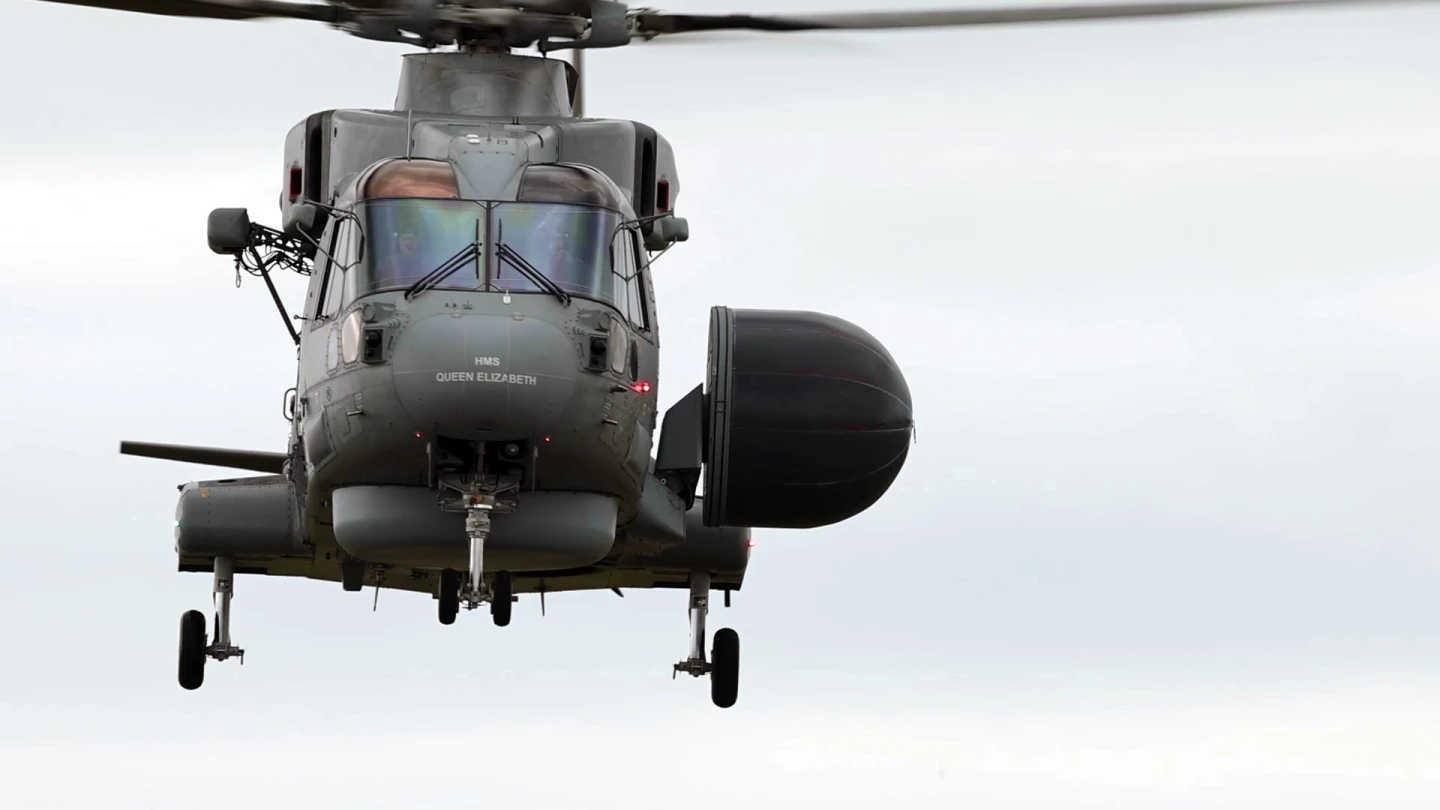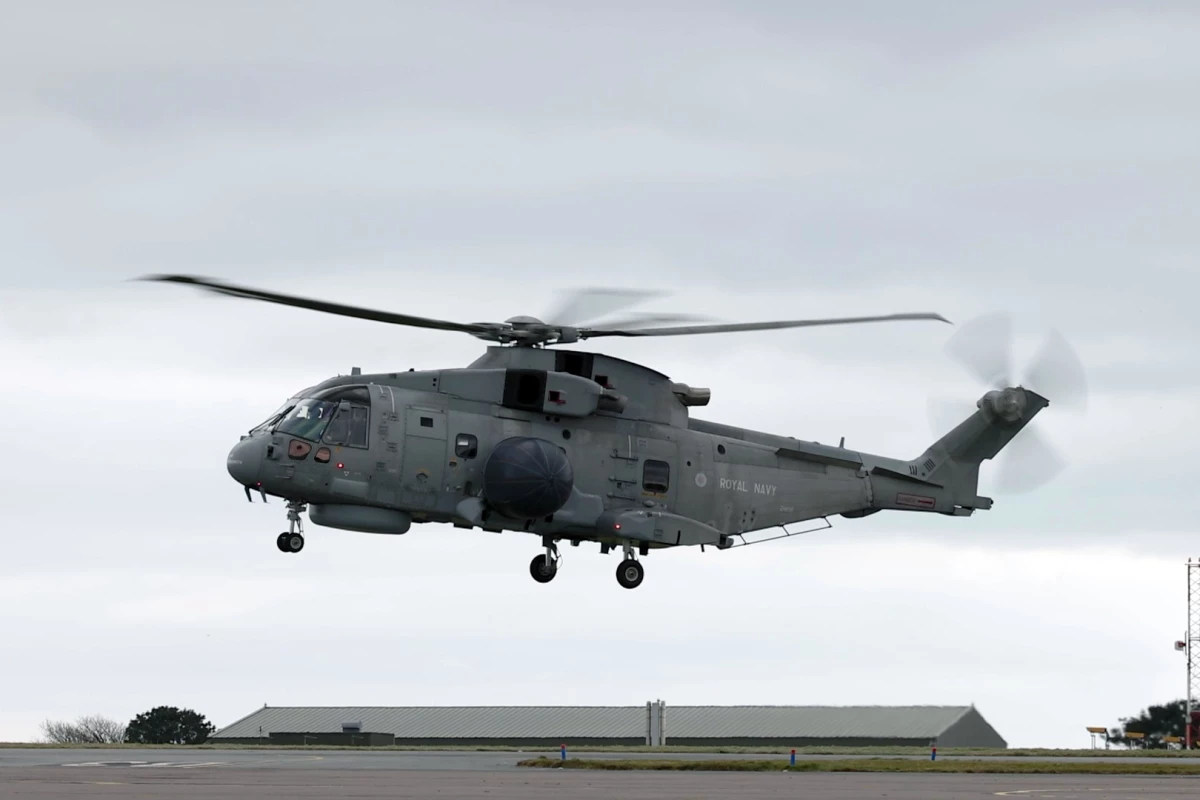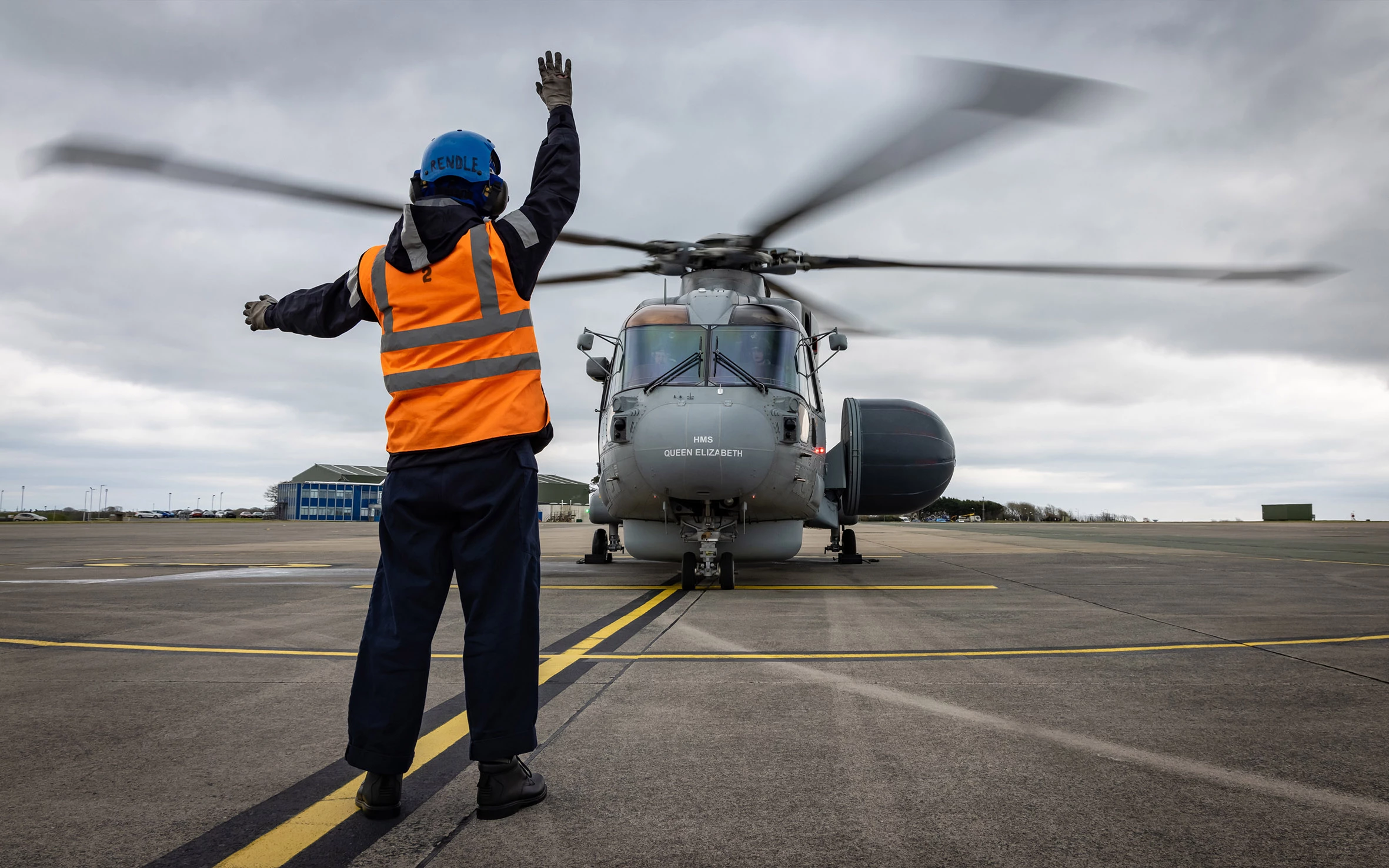The Royal Navy is ready to begin operational training of its new Merlin "Crowsnest" Airborne Surveillance And Control (ASaC) helicopter as it prepares for the aircraft's first deployment aboard the supercarrier HMS Queen Elizabeth later this year.
Under development since 2017, the Crowsnest is being manufactured by Lockheed Martin and Leonardo Helicopters as a replacement for the venerable Westland Sea King Airborne Early Warning (AEW) helicopter from the retired 849 Naval Air Squadron, which has been in service since 1982. The new helicopters will be based at Royal Naval Air Station Culdrose near Helston on the Lizard Peninsula of Cornwall, where aircrews are now undergoing training.
Based on a mission-configurable Merlin Mk 2 airframe, it boasts the latest version of the Thales Searchwater radar and Cerberus Mission System, which will provide the capability for long-range warning against high- and low-level aerial attacks, high-resolution long-range intercept direction of fighter aircraft, and detection of very small, fleeting objects like jet skis and periscopes. In addition to air and missile defense, Crowsnest can act as an aerial strike command and control unit.

Crowsnest shares the same basic design as the Sea King AEW, which was the result of a remarkable example of rapid innovation in the face of necessity.
The Royal Navy's previous AEW capability was provided by the Fairey Gannet AEW.3 airplane, which was introduced into service in 1959. This was a fixed-wing aircraft designed to operate from strike carriers, but when HMS Ark Royal was decommissioned in 1978 to make way for the Invincible class carriers, the Gannet had to be decommissioned as well because the Invincible carriers could only handle Harrier jump jets and helicopters, but not conventional fixed-wing aircraft, which need catapults and arrestor wires.
Unfortunately, no replacement for the Gannet was on the drawing boards, so when the Falklands War broke out in 1982, the British Task Force sent to the islands had no airborne warning system. As a result, several ships were lost or severely damaged because the British forces couldn't detect low-flying Argentinian missile attacks.

In answer to this, two Sea Kings were fitted with Thorn-EMI ARI 5980/3 Searchwater LAST radar on a swivel arm and protected by an inflatable dome. This dome could be swiveled to horizontal while taking off and landing, and vertical for operations. These modifications were completed in a mere 11 weeks and the Sea Kings were then deployed aboard HMS Illustrious after the end of the war to protect the Strike Force. Since then, these "baggers" have been standard equipment to provide radar eyes for the Royal Navy carrier groups.
"The delivery of this first aircraft at Culdrose represents an enormous amount of hard work, dedication and passion across the defense and industry enterprise," says Captain Stuart Finn, the Commanding Officer of RNAS Culdrose. "It marks a significant moment for the Royal Navy as we become a carrier task group navy capable of deploying around the world as a sovereign group or with our allies. It is especially poignant that these aircraft are based here at Culdrose, the home of ‘the eyes of the fleet’, and we are proud of our association with airborne surveillance and control and before that, airborne early warning. These aircraft will work side by side with the rest of the Merlin Mk2 force to provide a world-class line of defense for our global navy, adding above water expertise to our already renowned submarine hunting skills."
Source: Royal Navy









